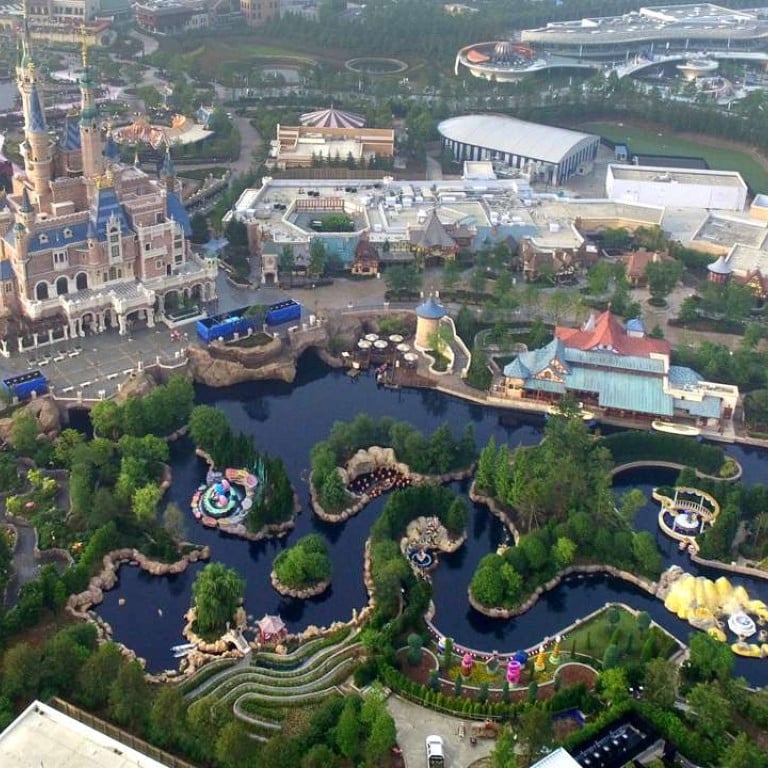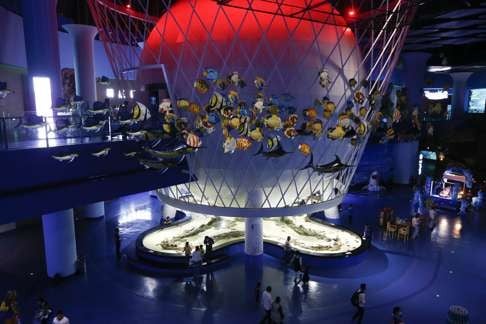
Chinese theme park operators on the hunt for IP acquisitions, alliances to quell the Disney challenge
Wanda leads in intellectual property deals amid a flurry of theme park developments
Competition between amusement park operators in China is set to intensify further as new entrants look to attract more customers with local themes and global alliances, even as bigwigs like Disney and Wanda continue adding more attractions to cope with growing customer demand.
Be it the Hello Kitty theme park in Zhejiang province, or Monkey King characters in the Wanda park, companies are leaving no stones unturned in their hunt for new attractions to upstage the charms of Mickey and friends in Shanghai.
“Disney’s arrival in China will really impact the market as it will show Chinese companies the advantage of having original IP content,” said Ronald Merriman, managing director of MRProfun China, a consultancy that specialises on the theme park sector.
Wanda, owned by billionaire Wang Jianlin is dropping its real estate cloak to become a culture and tourism giant and has plans to build scores of theme parks in China to quell the Disney challenge. Last year, the group acquired 1,330 IP assets in China and other countries, bringing the total number to 4,219, the most in the culture sector.
In January, it paid US$3.5 billion for Legendary Entertainment, a US film studio famous for producing movies like Jurassic World, The Dark Knight and Godzilla.
“We are looking to acquire more quality content abroad, like the Legendary deal, to boost our culture business,” said a source from Wanda who did not want to be identified.
Shimao Property, a Shanghai-based theme park developer is teaming up with US animation firm Dreamworks for the Shimao-Dreamworks Animation project in Nanjing, that is slated to open in 2019.
“We want to leverage the Dreamworks brand image and the quality of their work to attract customers,” said Shao Liang, vice-president in charge of marketing and sales at Shimao.
Liang said the cooperation allows them to use the studio’s famous characters including Kung Fu Panda and the park is expected to attract about 10 million visitors every year.
Besides Disney, Dreamworks, Legoland and Hello Kitty already have theme parks in China, while others are teaming up with global majors like Six Flag, Time Warner, Discovery and Universal Studios for ventures across the length and breadth of China.

“Chinese consumers are now more globally aware. One only has to consider the growing number of Chinese tourists in almost every destination around the world to understand that the culture, and therefore the brands of the countries being visited, will make an impact and change tastes,” said Tim Mackey, corporate partner at law firm Paul Hastings, who has years of experience in advising developers of theme parks in the Asia-Pacific region.
We want to leverage the Dreamworks brand image and the quality of their work to attract customers
Some companies have already moved ahead and reaping the benefits of IP alliances.
China Animation, a Shenzhen-based animation firm, won the licensing contract from Sega Japan to develop the Joypolis Indoor Amusement Parks in China.
The company said its net profit rose by 46 per cent to HK$110 million by the end of March 31, 2016 after its first park opened in Shanghai in February. The Shanghai Joypolis contributed more than 33 million yuan in tickets sales by March, attracting an average 77,000 visitors a month, the company said.
The license fee and royalty fee paid allows China Animation to use Joypolis’ brand and its copyrighted game machines such as a Transformers ride and a racing game based on Japanese manga Initial ‘D’, said Jason Zhuang, chairman of China Animation.

“The copyright fee was very low, just a single digit percentage of our sales, as we have known each other for a long time,” he said.
Zhuang, who speaks good Japanese, said the company has built strong relations with several Japanese companies as they have been trading copyrighted animation-derivative products from Japan for a decade. “Honesty is the key, rather than the price,” he said.
But not every licensing deal could be that smooth.
Experts say there are three ways to access global IP assets. While some chose to acquire the company that owns the IP, others chose to form a joint venture and later on sign a licensing deal for use of the name, characters, stories etc such as Disney’s arrangement with Shanghai government . The last option is to sign exclusive licensing arrangements with the original IP holder.
“Successfully completing an IP licensing deal is a very complex process,” said MRProfun’s Merriman.
“It usually requires a significant investment of time and money. It also requires appreciating that IP owners are justifiably protective of their brands; partnering with an IP owner means committing to a level of quality – in design, construction, and on-going operation – that cannot be achieved quickly or cheaply,” he said.
The fast growth of middle class and the central government’s call for boosting domestic consumption has sparked a boom in theme park construction across China . Last year, 21 theme parks opened in China, with another 20 parks under construction. There are nearly 300 theme parks across the country, according to a report cited by China’s Economic Information Daily.
Amid the fierce competition, leveraging IP in attractions is a step forward, but it can not solve all problems, said Mackey from Paul Hastings.

“These projects will succeed only if the customer experiences are top-notch,” he said.
That said companies also need to constantly add new attractions and shows, augment capital resources and improve the maintenance and operation standards, said Mackey.
Even as competition on the ground is intensifying , some companies are looking to market their original IP developments. China Animation has been investing a lot of money and effort to create its own animation characters, with the most popular one being a virtual musical girl named “Violet.”
Zhuang said they have already added “Violet” as a major character in the Shanghai Joypolis attractions.
“We are the best example of the combination of Chinese and international brands,” he said, adding that the company will open more Joypolis parks across China, including big cities like Guangzhou and Shenzhen.

